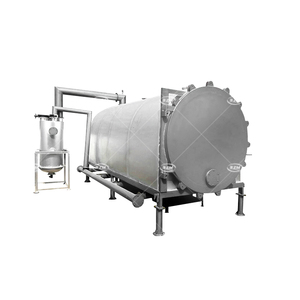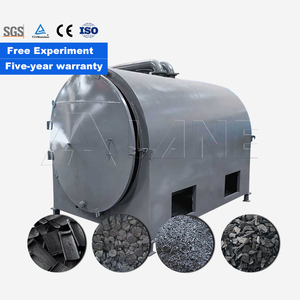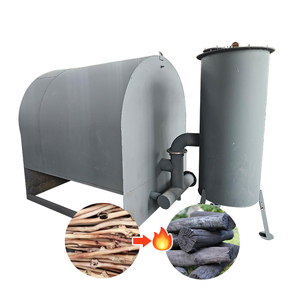(3064 products available)

































































































































































































A rice husk stove utilizes rice husk as fuel, solving the issue of disposing of rice husk while providing an energy source for cooking and other purposes. There are many types of rice husk stoves as follows:
Tappy-type rice husk stove
A tappy-type rice husk stove combines two cooking instruments into one. Its design is simple and consists of a cylindrical metal barrel with a stove base. Husk is placed inside the barrel and ignited, and heat and flames rise from the stove's base, which supports vessels used for cooking.
Gasifier rice husk stoves
The gasifier rice husk stove is a systematic and scientific method for utilizing biomass energy through gasification. The stove consists of several parts, such as a feed inlet, a gasifier reactor, a gas outlet, a cyclone separator, and a slag outlet. This kind of stove allows users to feed rice husks into the stove through the inlet. Following this, the rice husks undergo different reactions in the gasifier reactor, where rice husk char, gas, and tar are produced. Then, the rice husk gas goes out through the gas outlet. The cyclone separator collects rice husk tar and char, while the slag outlet removes slag. Gasifier rice husk stoves have several features, such as clean energy output, efficient use of rice husks, and environmental protection.
Double combustion chamber rice husk stove
The double combustion chamber rice husk stove has two combustion chambers, which increase combustion efficiency. In the first combustion chamber, rice husks are burned, and an additional air supply system in the second combustion chamber promotes complete combustion. This design decreases emissions and enhances energy efficiency.
Pressure-draft rice husk stove
A pressure draft rice husk stove employs a blower or fan to propel air into the combustion chamber, raising the oxygen content and combustion temperature. The homo-mixer rice husk stove is a sub-type of the pressure-draft rice husk stove, which uses a homogeneous mixer to guarantee consistent fuel and air mixing.
Updraft rice husk stove
The updraft rice husk stove's design allows air to flow upward through the rice husks. This natural airflow enhances burning efficiency and decreases pollutants.
Portable rice husk stove
Portable rice husk stoves are convenient for outdoor use, travel, or camping. They are small, lightweight, and portable, so users can easily transport and use them. Normally, portable rice husk stoves adopt a folding or disassembly design.
Material
Rice husk stoves are made from metals like cast iron, stainless steel, or aluminum alloys. Cast iron rice husk cook stoves have a longer-lasting life. They also distribute heat evenly. Husk stoves made of stainless steel are more durable, corrosion-resistant, and quickly cleaned. Aluminum alloy stoves are lightweight for easy transport.
Design
Rice husk stoves for cooking are designed to accommodate different types of cooking. It has an adjustable chimney for smoke control. Some stoves have an automatic shut-off when the food is done. The two common designs are the traditional and portable stoves. The portable version is lightweight for outdoor use.
Burner
A rice stove burner is the part where fuel burns. It has an outlet for heat and a fuel inlet. The burner may have automatic ignition or a manual start. A rice cooker stove burner can be fixed or moved. Moving burners allow for greater control over heat distribution while cooking.
Fuel System
This part stores and supplies fuel. It includes the fuel container and feeding mechanism. In some stoves, the fuel goes in manually. In others, there is an automatic way to feed it.
Heat Control
This feature regulates the stove's temperature. It includes the knobs and sensors. Some rice husk stoves have a timer. Other models let users set exact temperatures. Cook rice husk stove with heat control helps prevent burning food.
Cleaning:
For lasting use, clean the rice husk fuel stove/power regularly. Remove ashes and rice husks after each use. Clean the burner and fuel channels with a soft brush. Then, wipe the surfaces with a damp cloth.
Inspection:
Do frequent checks on the rice husk stove clean. Look over the body and parts like the burner, fuel channels, and ignition. Find any cracks, clogs, or loosened connections. Fix any issues right away to avoid accidents or damage.
Replacement:
Some husk stoves have parts that can be changed if they are worn out, damaged, or not working. Always use original or quality substitute components to maintain safety and proper operation.
Safety:
Aspects of safety need ongoing maintenance. The smoke exit needs to be clear, and there should be no blockages in the tube. The power stove husk fire should have a set of safety tools like fire extinguishers, and everybody should know how to use them. Store fuel safely away from fire risk areas.
The rice husk cooker stove can be used at home and in other industries that process food. Some of them are discussed here.
Household cooking
Traditional rice husk cookers are designed for use at home. Nowadays, modern rice cooker stoves can supplement or replace fuel gas and electric cookers. This is especially true in rural areas far from urban centers. Rice husk cookers are cheap and easy to use daily to prepare meals.
Restaurants and food industry
Restaurants can use rice husk cookers to boil, fry, and grill food. Using a rice cooker stove increases a restaurant's sustainability and eco-friendliness. The daily fuel requirement for rice cooker stoves is less than biomass cookers. This reduces overall operating costs. Rice cooker stoves are cheaper than electric ones and can be used when there are power cuts.
Farmhouses
On farms that grow rice, the husk produced during harvest and processing is huge. This creates an ideal opportunity to install rice cooker stoves in farmhouses. Cooks will get free fuel from rice husk to prepare farm workers' meals. The farm can also install a large rice cooker stove to prepare processed farm produce, such as boiled chicken or rice.
Hotels
Hotels, especially those located close to rice farms, can install rice husk stoves to reduce their carbon footprint. Cookers can use waste material as a byproduct of rice processing. Guests will get tasty food cooked using rice husk fuel. Husk cookers are more economical than electric cookers that depend on the electric grid.
Industrial energy production
Some industries can use rice husk stoves to produce energy on-site. The industry need not depend on the local electric grid for electricity. The energy produced can be used to power generators or as the primary fuel to process food. Industries that can benefit include rice mills, paper, and Biomass power generation companies.
Teaching and demonstration centers
Educational institutions can use rice husk stoves in their agriculture training and extension centers. Cookers can be used to show how rice husk can be turned into energy and the best practices to use them sustainably. Participants in environmental conservation workshops may also gather around rice husk stoves during cooking sessions. Stoves can be used as a model in classrooms to teach energy transformation and renewable energy concepts.
Rural and urban community centers
Community centers in rural and urban poor neighborhoods can install rice cooker stoves. They can be used to provide free or low-cost meals to community members. Husk stoves can be a focal point in community events, workshops, and educational sessions to teach the benefits and use of rice cooker stoves and other renewable energy sources.
Environment conservation NGOs
Non-governmental organizations focused on environmental conservation can promote the use of rice husk stoves in communities. The goal can be to reduce the impact of deforestation caused by the need for firewood. Stoves can be used economically to reduce waste rice husk, which otherwise would contribute to high carbon emissions methane greenhouse gas. The organization can hold public education campaigns to teach people how to use rice husk stoves.
Business buyers of rice husk stove can choose these products based on some key features that are important for commercial purposes. They are demand assessment, efficiency and capacity, design features, and quality and safety certification.
Demand assessment:
First of all, business buyers need to identify the exact type of consumers they are targeting. Are they targeting small-scale households, large-scale households, or rural restaurants? Business buyers need to understand the needs of their target audience for the rice stove type. Understanding the target market's purchasing power is also essential. Business buyers need to ensure the final product can afford the consumers they are trying to sell to.
Efficiency and capacity:
Business buyers should choose rice husk stoves with both thermal efficiency and fuel utilization efficiency. High energy efficiency helps end users save money on fuel costs. Also, stoves with higher capacities can meet the demands of large-scale commercial establishments like restaurants. Thus, stoves with large capacity can become a good-selling option better than stoves with smaller capacity.
Design and features:
Business buyers can choose rice husk stoves with several useful modern features and functions. For instance, they can choose stoves with a double combustion system to sell to consumers who are environmentally conscious. Also, rice husk stoves with an adjustable flame option can help consumers cook different types of food. Besides, rice husk stoves with an insulated body can protect the surrounding area or the users from heat damage.
Quality and safety certification:
When buying rice husk stoves in bulk for businesses, buyers should choose products that have been certified by a reputable standard organization. Quality certification indicates the quality and reliability of the products. Also, safety certifications like CE and ISO can ensure that the product has been manufactured according to strict environmental and safety standards.
Q1. How does a rice husk stove work?
A1. The rice husk stove manufactured by the Biomass Energy Technology Promotion Office works in three phases. First, rice husk is fed into the stove through the feed inlet. After that, the rice husk goes through the carbonization process, where it changes into charcoal. Finally, after the process is completed, the charcoal is removed through the outlet.
Q2. What are the benefits of rice husk stove?
Carbonization chamber can produce rice husk ash which is also known as silica. This material has a huge market demand. The cultivators of the rice industry usually consider this a waste product. The rice husk stove can be a solution to this problem. In addition to this, rice husk stoves can offset the use of LPG and firewood.
Q3. What are the limitations of rice husk stove?
One of the biggest challenges in rice husk stove design is ensuring that no oxygen enters the charcoal chamber. When carbonization occurs, some gases may emerge. If they are not properly vented, they may pose a risk of explosion.